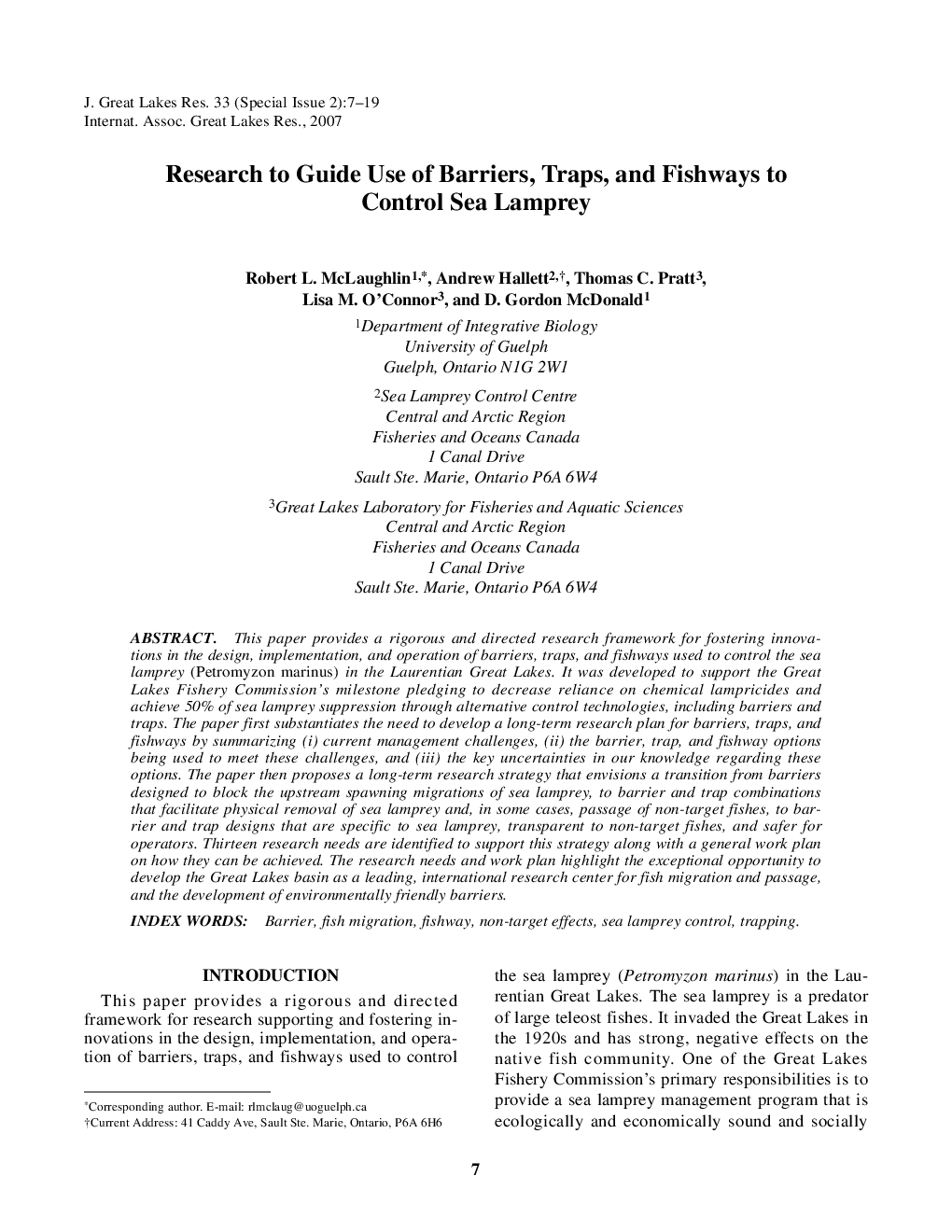| Article ID | Journal | Published Year | Pages | File Type |
|---|---|---|---|---|
| 4399473 | Journal of Great Lakes Research | 2007 | 13 Pages |
Abstract
This paper provides a rigorous and directed research framework for fostering innovations in the design, implementation, and operation of barriers, traps, and fishways used to control the sea lamprey (Petromyzon marinus) in the Laurentian Great Lakes. It was developed to support the Great Lakes Fishery Commission's milestone pledging to decrease reliance on chemical lampricides and achieve 50% of sea lamprey suppression through alternative control technologies, including barriers and traps. The paper first substantiates the need to develop a long-term research plan for barriers, traps, and fishways by summarizing (i) current management challenges, (ii) the barrier, trap, and fishway options being used to meet these challenges, and (iii) the key uncertainties in our knowledge regarding these options. The paper then proposes a long-term research strategy that envisions a transition from barriers designed to block the upstream spawning migrations of sea lamprey, to barrier and trap combinations that facilitate physical removal of sea lamprey and, in some cases, passage of non-target fishes, to barrier and trap designs that are specific to sea lamprey, transparent to non-target fishes, and safer for operators. Thirteen research needs are identified to support this strategy along with a general work plan on how they can be achieved. The research needs and work plan highlight the exceptional opportunity to develop the Great Lakes basin as a leading, international research center for fish migration and passage, and the development of environmentally friendly barriers.
Related Topics
Physical Sciences and Engineering
Earth and Planetary Sciences
Earth and Planetary Sciences (General)
Authors
Robert L. McLaughlin, Andrew Hallett, Thomas C. Pratt, Lisa M. O'Connor, D. Gordon McDonald,
